
In an era marked by rapid technological advancements, cloud computing serves as the backbone supporting a myriad of digital infrastructures worldwide. As businesses aim for agility, scalability, and innovation, the competition heats up among cloud providers. Azure, AWS, and Google Cloud lead this race, revolutionizing the cloud landscape.
Understanding Cloud Infrastructure and its Benefits
Cloud infrastructure provides virtualized computing resources over the Internet, allowing businesses to store, manage, and process data more efficiently than traditional servers. Adopting the cloud brings several advantages:
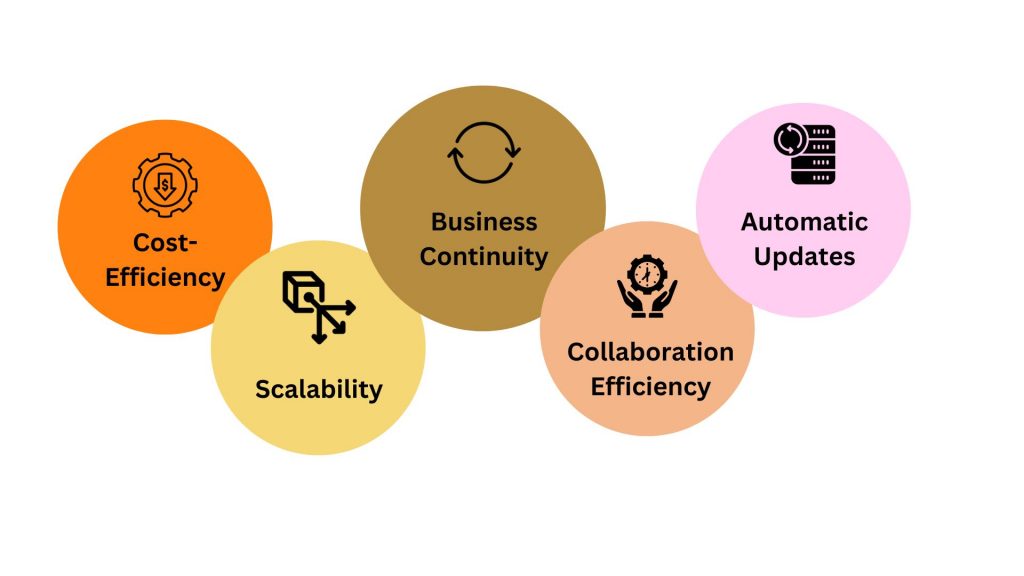
- Cost-Efficiency: Cloud computing eliminates the capital expense of buying and managing physical servers.
- Scalability: Adjusts easily to the fluctuating needs of the business.
- Business Continuity: Provides excellent data backup, disaster recovery, and business continuity options.
- Collaboration Efficiency: Enhances collaboration by allowing remote access to data and resources.
- Automatic Updates: Off-premise servers are maintained by vendors, ensuring regular software and security updates.
The Evolution of Azure, AWS, and Google Cloud
Azure, AWS, and Google Cloud are at the forefront of innovation, steering the next generation of cloud infrastructure with a commitment to quality, reliability, and efficiency. These platforms have incessantly evolved, adapting to market needs and setting trends in the industry. They leverage cutting-edge technologies like artificial intelligence, machine learning, and big data analytics to offer state-of-the-art services that help enterprises drive digital transformation initiatives.
The Existing State of Cloud Infrastructure
In the existing state of cloud infrastructure, Azure, AWS, and Google Cloud have emerged as distinct leaders, each with its own set of capabilities and offerings.
Azure, the brainchild of Microsoft, integrates seamlessly with numerous Microsoft products. It offers an impressive range of services encompassing various aspects like AI, machine learning, and the Internet of Things (IoT), facilitating a rich environment for businesses to thrive.
AWS, a subsidiary of Amazon, has been a market leader for years, with a vast array of services and a robust network of data centers worldwide. It has cultivated a rich ecosystem that integrates seamlessly with various third-party applications and services.
Google Cloud, with its expertise in big data and open-source technologies, offers unique propositions for enterprises. Its commitment to innovation and integration of AI and machine learning capabilities sets it apart.
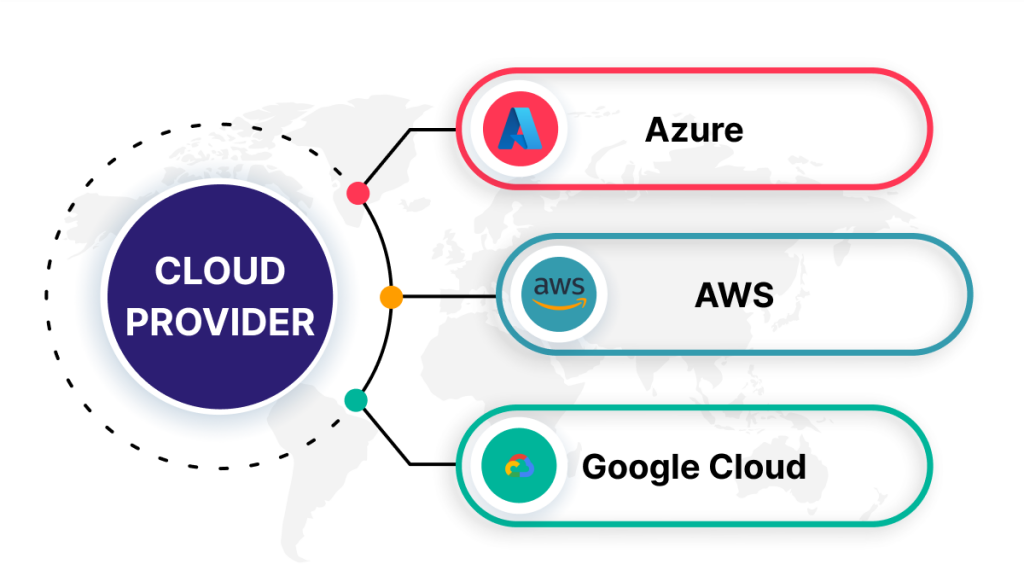
Dominance of Azure, AWS, and Google Cloud in the Cloud Computing Industry
Each of these platforms has carved a niche for itself by offering a rich array of features and services.
Azure:
Market share: 20%, making it particularly popular among enterprises.
Features and Services: Offers a wide range of solutions, including computing, storage, networking, databases, analytics, machine learning, artificial intelligence, Internet of Things (IoT), mobile, and developer tools
Unique Offerings: Integrates seamlessly with Microsoft products, a boon for organizations already relying on Microsoft’s software.
AWS:
Market share: 33%, making it a favorite among many businesses.
Features and Services: Known for its extensive service offerings including computing power, storage options, databases, analytics, machine learning, artificial intelligence, the Internet of Things (IoT), mobile, developer tools, and networking capabilities.
Unique Offerings: Provides a highly reliable and scalable infrastructure platform with a vast network of data centers worldwide.
Google Cloud:
Market share: 10%, it has rapidly gained traction in the industry.
Features and Services: Renowned for its Computing, storage, networking, databases, analytics, machine learning, artificial intelligence, Internet of Things (IoT), machine learning engine, Kubernetes engine
Unique Offerings: Offers strong networking and excellent data analytics and machine learning services.
Strengths of Cloud Provider
Let’s scrutinize the strengths inherent in each provider.
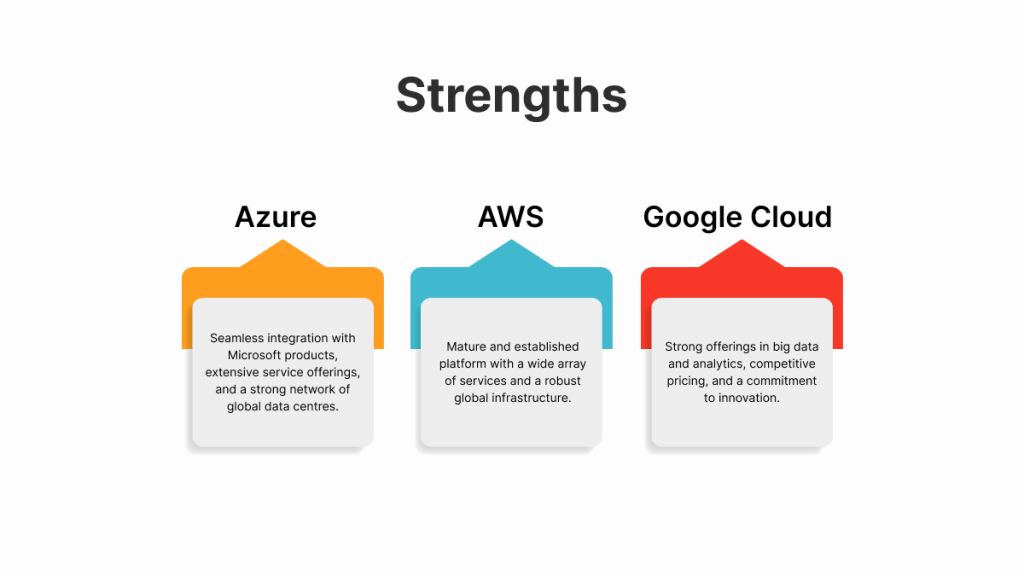
Azure, AWS, and Google Cloud Usage Across Businesses
Azure, AWS, and Google Cloud are widely adopted by businesses of all sizes, from startups to multinational corporations. They offer a range of services and solutions tailored to meet the diverse needs of their customers.
Startups:
Small businesses and startups often turn to AWS for its flexible pay-as-you-go pricing model, which allows them to scale resources up or down based on demand. This enables cost-effective development and deployment of applications without large upfront investments.
Mid-sized Enterprises:
Azure is popular among mid-sized enterprises due to its seamless integration with existing Microsoft products like Windows Server, Active Directory, and Office 365. This integration simplifies the transition to the cloud for organizations heavily reliant on Microsoft technologies.
Large Corporations:
Google Cloud is favored by large corporations for its data analytics and machine learning capabilities. Businesses can harness the power of Google’s vast data infrastructure to gain valuable insights and make data-driven decisions.
Emerging Trends Shaping Cloud Infrastructure
The cloud infrastructure landscape is continually evolving, driven by technological advancements and changing business needs. Some key trends include:
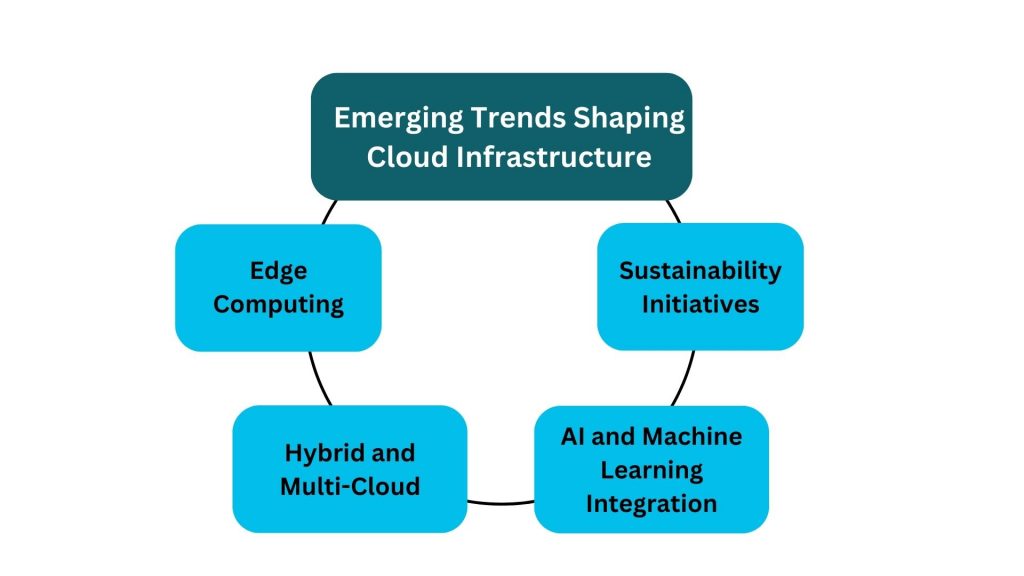
a. Edge Computing: With the rise of IoT devices, edge computing is gaining prominence. Cloud providers are expanding their services to the edge, enabling faster data processing and reduced latency.
b. Hybrid and Multi-Cloud: Businesses are increasingly adopting hybrid and multi-cloud strategies to avoid vendor lock-in and improve resilience. Cloud providers are enhancing their compatibility and integration options to accommodate these trends.
c. AI and Machine Learning Integration: All major cloud providers are investing heavily in AI and machine learning capabilities, making it easier for businesses to develop and deploy intelligent applications.
d. Sustainability Initiatives: Cloud providers are actively pursuing green initiatives by investing in renewable energy sources and carbon offset programs to address growing concerns about the environmental impact of data centers.
Challenges for Cloud Providers
Cloud providers face several challenges in maintaining their positions at the forefront of technology:
a. Security Concerns: As cloud usage grows, so do security threats. Providers must continually enhance their security measures to protect sensitive customer data.
b. Regulatory Compliance: Compliance with evolving data privacy and security regulations, such as GDPR and CCPA, presents an ongoing challenge for cloud providers.
c. Cost Management: Customers demand cost transparency and control. Cloud providers must develop tools and services that enable businesses to optimize their spending.
d. Talent Shortages: A shortage of skilled professionals in cloud technologies can limit the pace of innovation and service expansion.
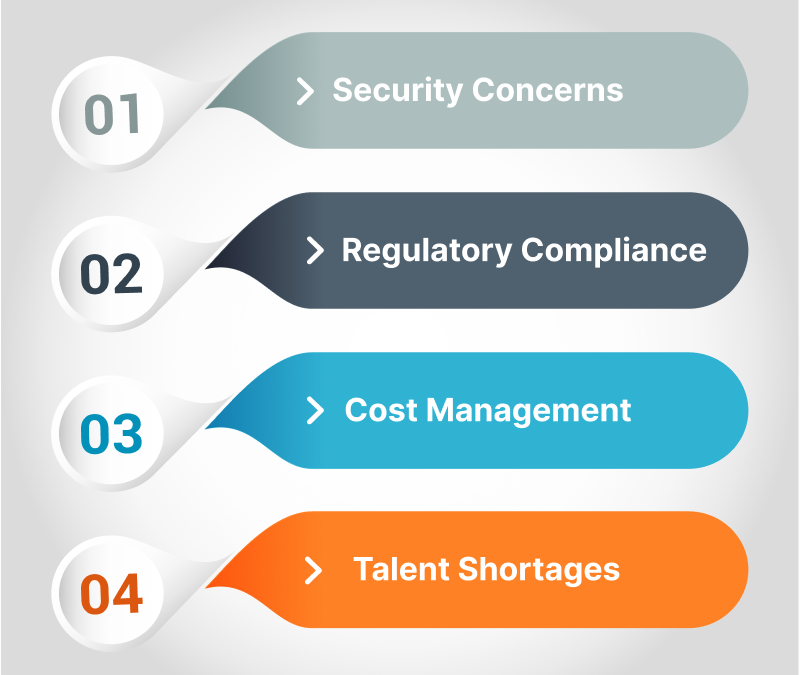
Conclusion
To conclude, Azure, AWS, and Google Cloud are indeed pioneering the next generation of cloud infrastructure. Their innovative approaches, combined with an array of dynamic services, have set new benchmarks in the industry, offering businesses the tools needed to thrive in the digital landscape.
As we look forward to an exciting future, it’s evident that these platforms will continue to play a pivotal role in shaping the cloud infrastructure of tomorrow. Stay tuned as we navigate through the complexities of cloud infrastructure and witness the dawn of a new technological era, spearheaded by these industry giants.


